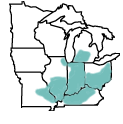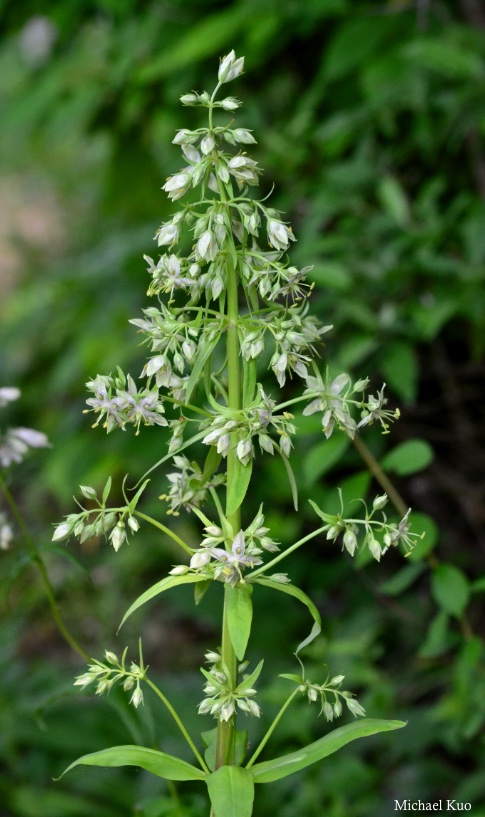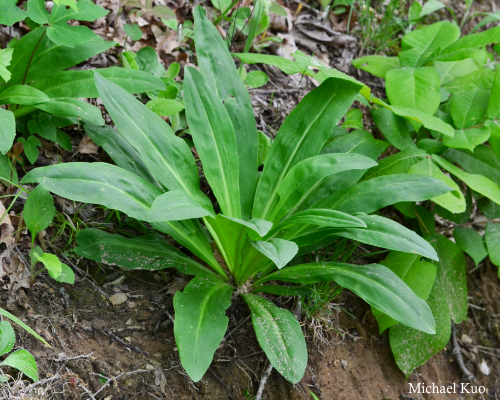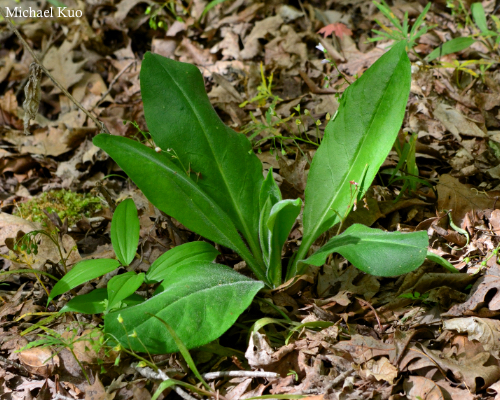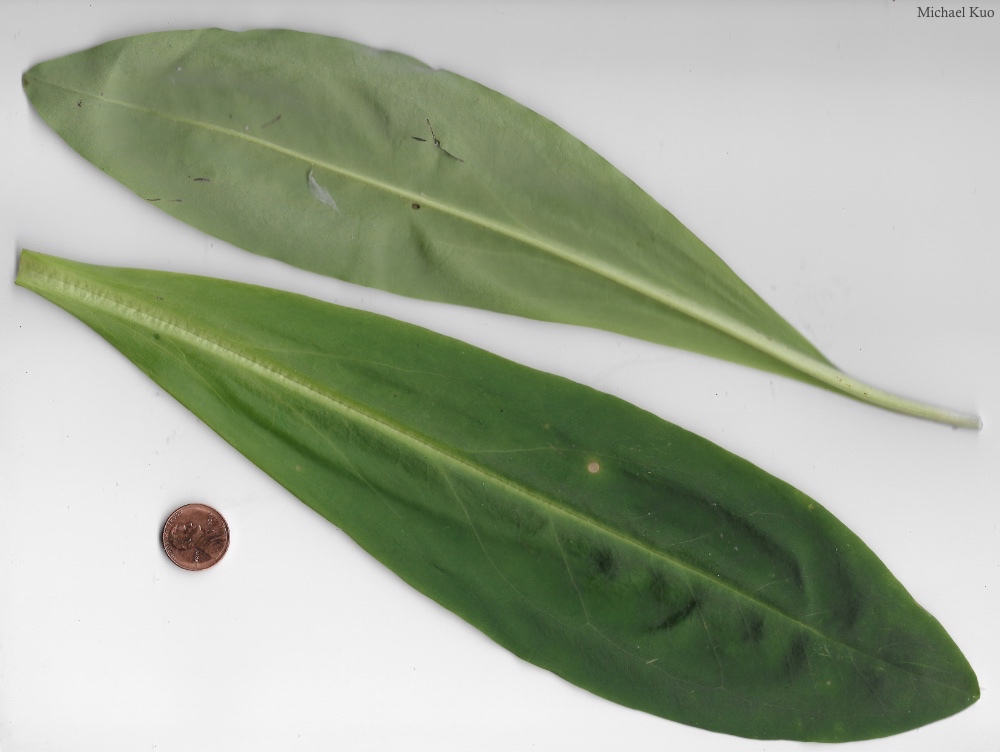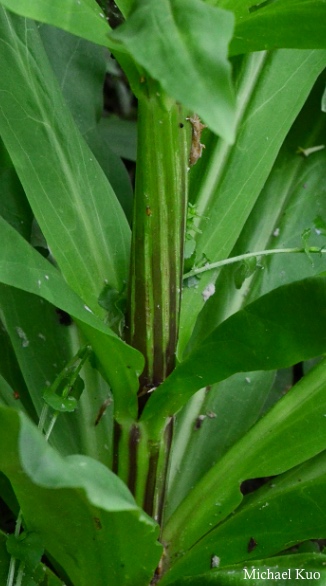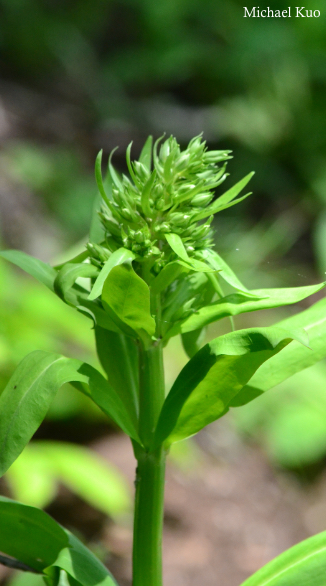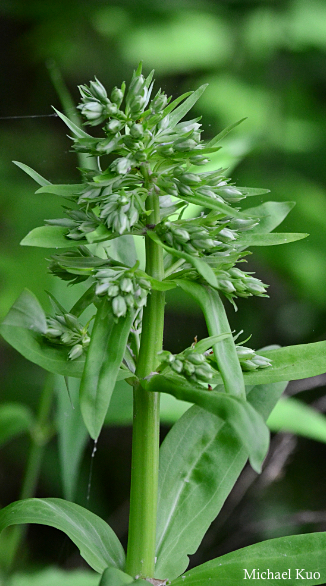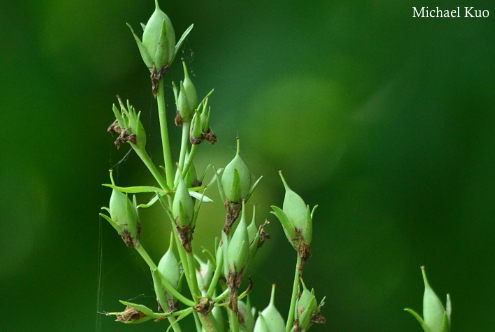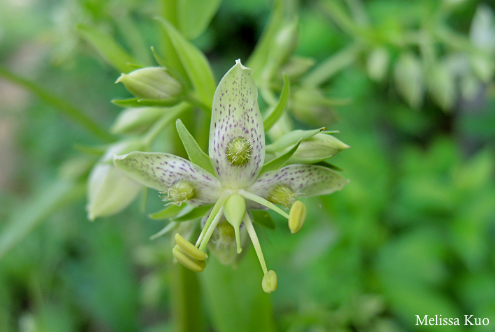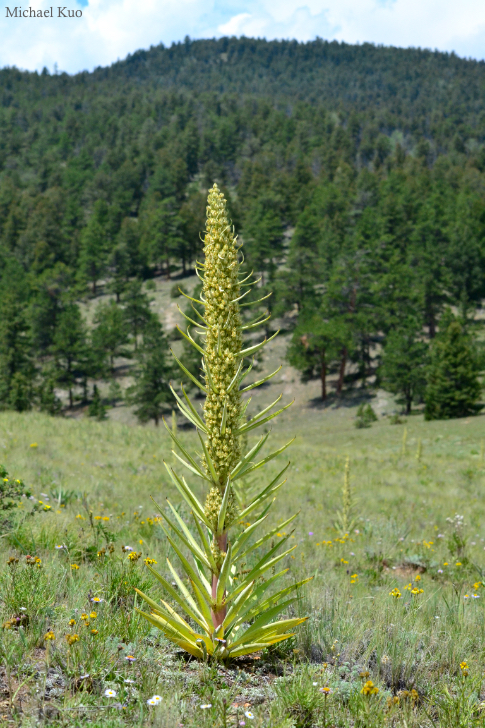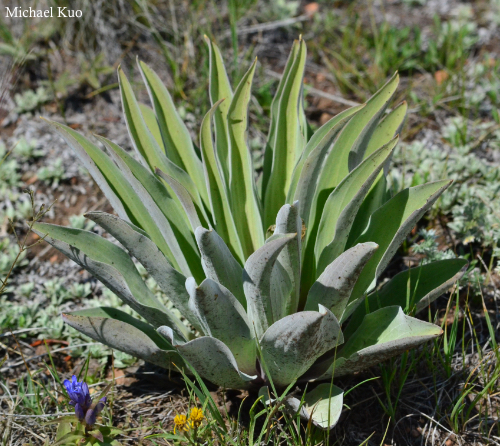 Frasera caroliniensis (American columbo) |
 |
|
When it's flowering, American columbo is a real show stopper: the plant reaches as high as 6 feet, and flowerheads cascade from its apex. The flowers themselves are small but gorgeous, dotted with purple and adorned with fringed nectar pads. American columbo is found through much of the Midwest, in a zone from roughly St. Louis to Detroit, Cincinnati, and Pittsburgh—often in oak-hickory woods, in open places with rich, sandy soil. But here's the thing: the plant is monocarpic, which means it flowers only once in its lifetime, and then dies away. And it can take 15 or more years for an American columbo plant to flower! For most of its life, it exists as an earth-bound rosette of long, green leaves, appearing each year in spring and growing to a height of a foot or so. Then, after many years like this, it suddenly thrusts itself skyward in late spring or early summer, creating a flowering spectacle in a final burst of glory. |
|
|
|
|
|
|
|
|
|
|
|
|
|
|
Monument plant (Frasera speciosa) |
|
|
Western North America's monument plant (also known as green gentian) is closely related to American columbo. It appears on open slopes from about 6000 feet to treeline. Like its eastern counterpart it spends most of its life as a spreading rosette of long leaves, flowering only once in its life—but the waiting period for the monument plant is estimated at 20–80 years! Flowering monument plants can reach 7 feet in height, covering themselves with flowers similar to those of American columbo. |
|
References: GN Jones 1971, Threadgill et al. 1981, RL Jones 2005, Smith et al. 2006, Kershaw 2007, Voss & Reznicek 2012, Heil et al. 2013; Mohlenbrock 2014, Ackerfield 2015; Hilty 2019, Schneider 2019, USDA 2019. Kuo, Michael & Melissa Kuo (September, 2019). Frasera caroliniensis (American columbo). Retrieved from the midwestnaturalist.com website: www.midwestnaturalist.com/frasera_caroliniensis.html All text and images © , midwestnaturalist.com. |
